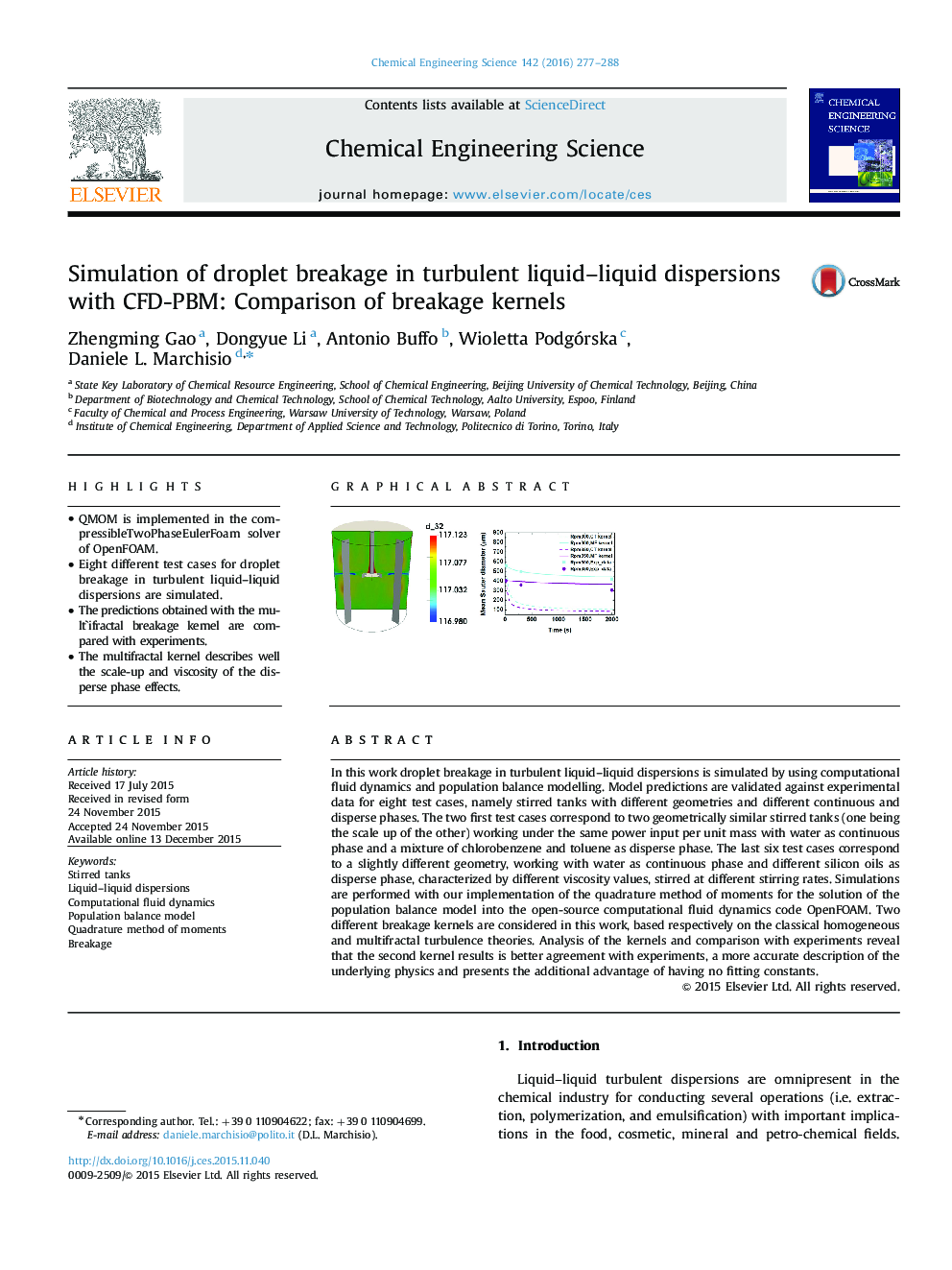| Article ID | Journal | Published Year | Pages | File Type |
|---|---|---|---|---|
| 154433 | Chemical Engineering Science | 2016 | 12 Pages |
•QMOM is implemented in the compressibleTwoPhaseEulerFoam solver of OpenFOAM.•Eight different test cases for droplet breakage in turbulent liquid–liquid dispersions are simulated.•The predictions obtained with the mult`ifractal breakage kernel are compared with experiments.•The multifractal kernel describes well the scale-up and viscosity of the disperse phase effects.
In this work droplet breakage in turbulent liquid–liquid dispersions is simulated by using computational fluid dynamics and population balance modelling. Model predictions are validated against experimental data for eight test cases, namely stirred tanks with different geometries and different continuous and disperse phases. The two first test cases correspond to two geometrically similar stirred tanks (one being the scale up of the other) working under the same power input per unit mass with water as continuous phase and a mixture of chlorobenzene and toluene as disperse phase. The last six test cases correspond to a slightly different geometry, working with water as continuous phase and different silicon oils as disperse phase, characterized by different viscosity values, stirred at different stirring rates. Simulations are performed with our implementation of the quadrature method of moments for the solution of the population balance model into the open-source computational fluid dynamics code OpenFOAM. Two different breakage kernels are considered in this work, based respectively on the classical homogeneous and multifractal turbulence theories. Analysis of the kernels and comparison with experiments reveal that the second kernel results is better agreement with experiments, a more accurate description of the underlying physics and presents the additional advantage of having no fitting constants.
Graphical abstractFigure optionsDownload full-size imageDownload high-quality image (257 K)Download as PowerPoint slide
